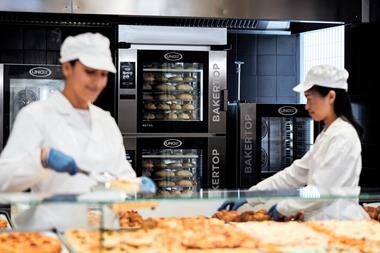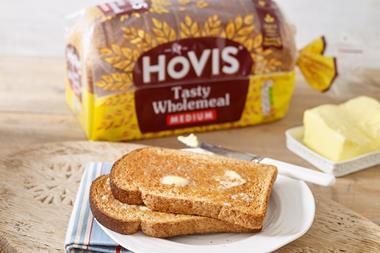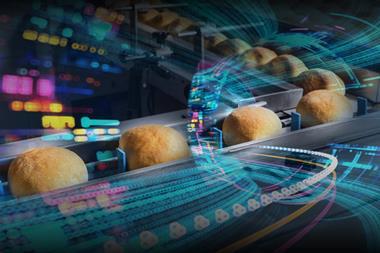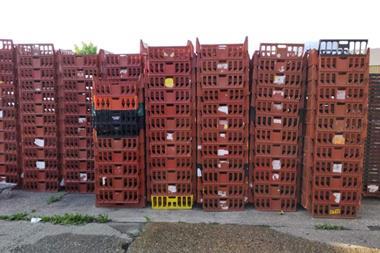With wetter doughs, artisan-style breads and inclusion-packed products, the bakery market is becoming more complex – and bakeware is having to adapt to match
They may be one of the simplest bits of kit in a bakery, but use the wrong tin, or use the right one in the wrong way, and it could impact product quality and force a business to replace tins or trays prematurely.
However, selecting the correct equipment has become more complicated as bakers widen product ranges and work with specialist doughs and products packed or topped with inclusions.
When choosing the style of tin or tray, a key consideration is the baking temperature, suggests Invicta Bakeware business development manager Lee Croucher, as some heat up quicker and others hold heat for longer.
“Most plant bakeries and large craft bakeries opt for bespoke equipment because this way they get a product perfect for their needs,” he adds.
Invicta says it has seen rising demand for certain sizes and shapes of tins and trays, particularly smaller loaf tins, while bloomer, French stick and Vienna trays are also popular.
Bundy Baking Solutions has also seen big demand for bloomer tins. It has made several sets for industrial bakeries and is considering adding this style of pan to its stock range next year, explains Wendi Ebbing, the company’s vice president of marketing.
Both Croucher and Ebbing believe the most versatile item is a flat tray that can be used to bake breads and sweet goods and offers complete flexibility in size and shape of the items to be baked.
“For smaller bakeries that want to develop small-batch individual bread products, while keeping investment in equipment to a minimum, standard flat baking trays are the most versatile option,” adds Croucher.
%%Quote_64%%
When it comes to specialist and wetter doughs, it is important to use tins, trays or pans designed to aid product release, advises Ebbing, adding that seamless-style tins are better than folded ones because the rounded bottoms release bread better.
Coating is also a major factor (see below).
“Doughs with lots of inclusions can have a detrimental effect on tins and trays, particularly those that are coated,” says Croucher. “The abrasive nature of nuts and seeds can inflict damage to the equipment surface and – with many of the softer styles of coating – can cause it to wear off completely.
He adds that the acids, oils and high sugar content in dried fruit, nuts and other inclusions can also lead to the ineffective release of products or work through coated surfaces, causing corrosion to the metal below.
Care must also be taken when cleaning trays used for inclusion-laden products.
“If there are seeds all over a tray and air is used at a high pressure to blow them off, the seeds can abrade the coating and cause premature failure,” points out Ebbing. “Proper cleaning with soft brushes, and low-pressure air is important to preserve the pans’ life of service.”
Croucher also points out that regular and appropriate tin cleaning and maintenance is essential. “Even non-coated aluminium or stainless steel can be damaged when subjected to acidic or alkaline conditions, so it is important to clean off fruit residues from all types of bakeware as soon as possible. If wear does start to occur, then equipment should either be recoated or replaced as necessary.”
Choosing a release agent
Richard Hazeldine, national sales manager at Zeelandia, offers advice on selecting and applying release agents
How does the type of baked good impact the choice of release agent?
The type of product being manufactured is just one of the elements affecting the choice of release agent. The recipe will also be a factor, as fat and sugar content will influence the dough’s adhesion to the baking surface.
The shelf life of the final product can also influence choice. Long shelf-life products or those that may be frozen need release agents that have good resistance to oxidation, as you don’t want any residual release agent on the product going rancid.
If you are depositing batter on to a sheet you may need to control the flow of the batter to ensure that products are of uniform size.
Just as important in the selection process is the baking surface: the shape, whether it has corners, whether it has perforations, the thickness and type of material used.
The condition of the baking surface is also a factor, as damage or carbon build-up can all influence the choice.
One point often overlooked when choosing a release agent is the method of application.
Are particular types of release agent more suitable for wetter doughs?
Most release agents work best when applied sparingly, particularly those with high lubricating and release power. With wetter doughs, release agents with water-repellent properties, such as oils and waxes, are best suited.
What types of release agent are most versatile?
Good emulsion-type products should release most bread products, but for those containing higher levels of sugar, oil and wax blends are best. These products are more versatile, releasing both bread and high-sugar products.
Has demand for clean-label bakery products had any impact on release agents?
Release agents are, by their nature, processing aids, so don’t form any part of the ingredient declaration. However, they still receive the same level of scrutiny as the ingredients used in finished bakery goods, so similar industry requirements apply – for example, no hydrogenated vegetable oils, no GM-derived ingredients, and approval for use in organic products.
Has your tin coating got you covered?
Choosing the right coating is a key factor in selecting bakeware.
“Wetter doughs, like gluten-free, release better from pans coated with a fluoropolymer coating,” advises Wendi Ebbing, Bundy Baking Solutions vice president of marketing.
The wide choice of coatings available have their own merits depending on the dough type and baking process.
“Non-stick coatings have added characteristics, such as primers and rust inhibitors, which give a longer release and coating life,” explains Lee Croucher at Invicta.
Invicta advises that PFA coatings perform better at higher temperatures, while FEP is more suited to dough with a high sugar or acidic fruit content. Meanwhile, PTFE is more abrasive-resistant, suitable for handling artisan-style doughs that may contain seeds, nuts and fruit.
































No comments yet